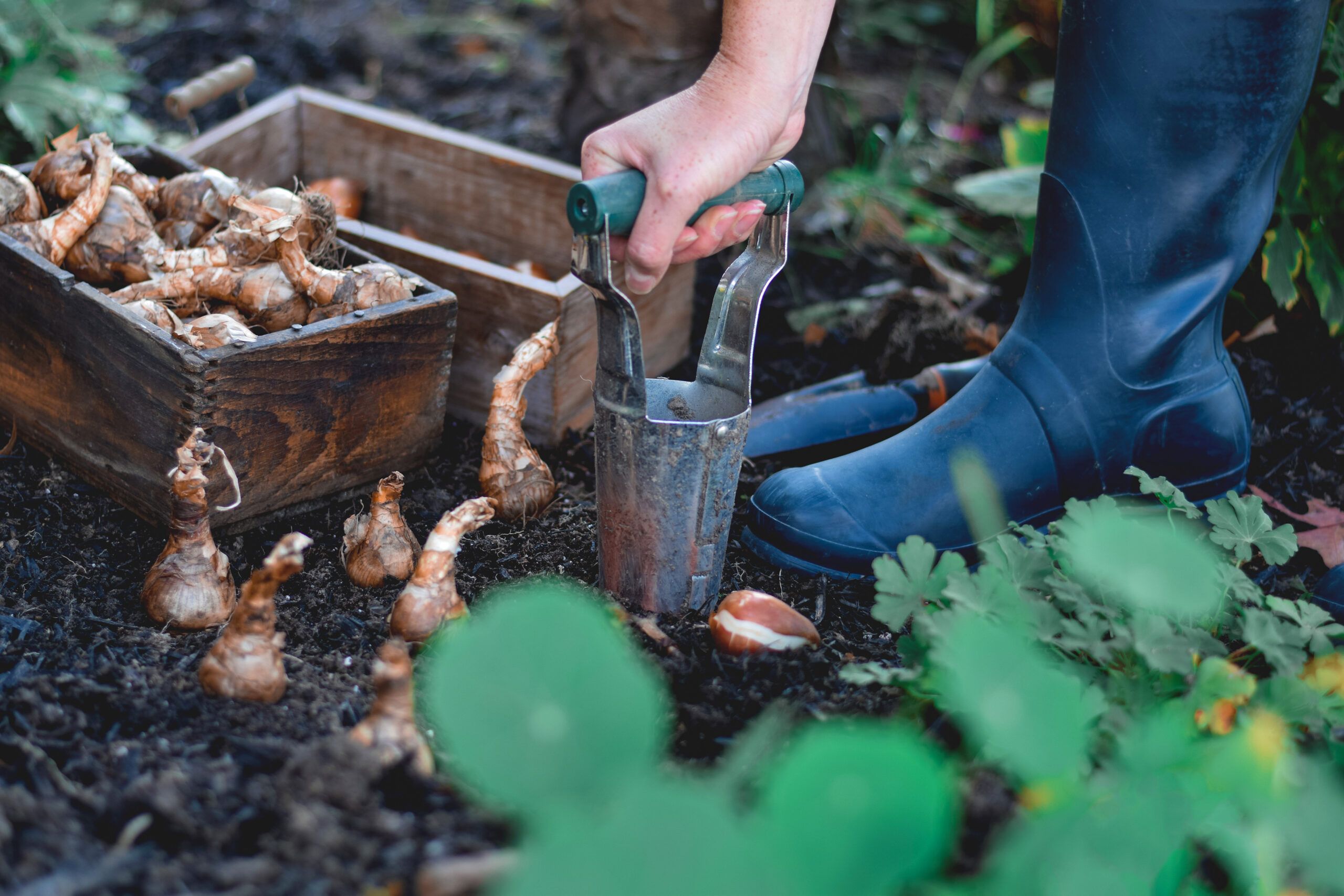Autumn is the perfect time to start planning for a beautiful spring garden. Flower bulbs are a great way to add color to your garden, but their success depends on careful planting and maintenance. This guide will take you through planting and caring for your bulbs so you can look forward to a vibrant and satisfying garden in the spring.
How To Plan for Fuller Garden Beds
A common mistake gardeners make is underestimating the number of bulbs needed for a truly impressive display. Calculating bulb requirements precisely is crucial to avoid sparse plantings. Follow the guidelines provided by bulb growers for recommended quantities.
Using this simple formula—A (area) × B (bulbs) = C (color)—guarantees you’ll have enough bulbs for a stunning show come spring. The calculation is straightforward: Determine the square footage of your planting area, then use the chart below to find out how many bulbs of a specific type you’ll need per square foot. Adjust these numbers based on bulb size: Top-size tulip bulbs are typically 12 cm or larger in circumference, while daffodils should be at least 16 cm.
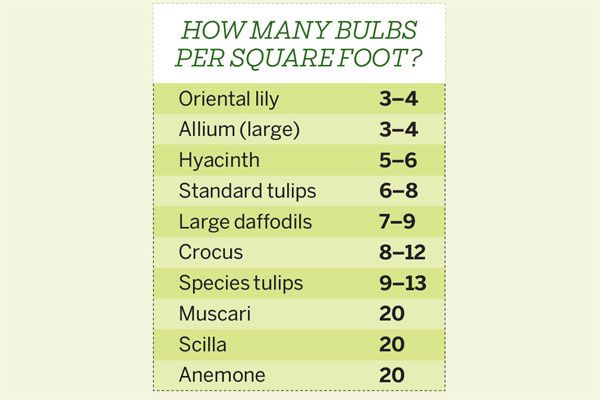
For example, to plant a 10-square-foot bed with large hyacinth bulbs, multiply 10 × 6 for 60 bulbs total. This approach prevents shortages and helps you plan your garden layout effectively.
When To Buy and Plant Your Bulbs
Timing is crucial when planting bulbs. Delaying your bulb purchase could mean missing out on the best varieties or getting lower-quality bulbs. Once they are taken out of storage, bulbs should be planted promptly to prevent them from deteriorating.
Most vendors ship bulb orders based on your growing zone, but knowing the best planting window for your area is useful. Generally, bulbs should be in the ground six weeks before the first hard frost. Refer to the USDA Climate Hardiness Zone Map and our color-coded chart to find your region’s optimal planting time for spring-flowering bulbs.
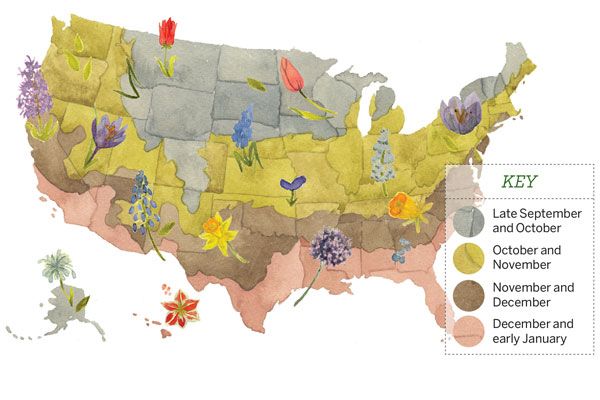
If you live in warmer climates (Zones 7 through 11), many large-flowering bulbs like tulips, hyacinths, and alliums need a chilling period. To mimic winter conditions, keep these bulbs in a refrigerator crisper drawer for 8 to 10 weeks before planting.
Pro tip: When selecting bulbs, choose large, firm, and free from visible mold or damage. Quality bulbs lead to healthier plants and more vibrant blooms.
Layer Bulbs for Successive Blooms
You can create a long-lasting display by planting different bulb varieties with staggered bloom times at various depths in the same hole. This technique, known as “lasagna planting,” allows you to enjoy flowers from early through late spring, even in limited space.
A 1-foot-diameter planting area dug 1 foot deep can accommodate:
- 7 large bulbs (e.g., daffodils),
- 6 medium-size bulbs (e.g., tulips),
- 8 small bulbs (e.g., crocus).
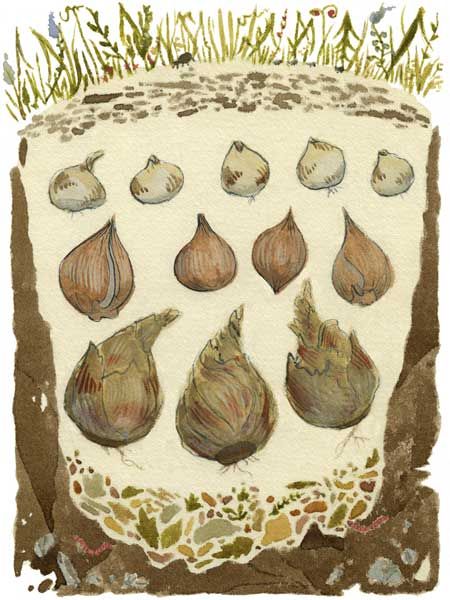
Follow the below instructions to plant using this method:
- Dig your hole and enrich the removed soil with compost.
- Mix a balanced (10-10-10) fertilizer with the soil at the bottom of the hole.
- For clay soils, add a 1-inch layer of sand or pea-size gravel for drainage.
- Place the largest bulbs in the hole first, oriented tip up and not touching.
- Cover with 2 inches of soil mix.
- Repeat with medium-sized bulbs, then the smallest bulbs.
- Cover with the remaining soil and water well.
Maintain moisture throughout the fall, then stop watering until spring. This layering technique will reward you with waves of colorful blooms for four to six weeks in spring, enhancing the beauty of your garden.
Interplant Bulbs With Perennials
Combining spring-flowering bulbs with early-to-midsummer-blooming perennials creates a dynamic and low-maintenance garden. This strategy allows bulbs to provide the initial burst of color before perennials emerge to conceal fading bulb foliage, which is essential to keep for next year’s growth.
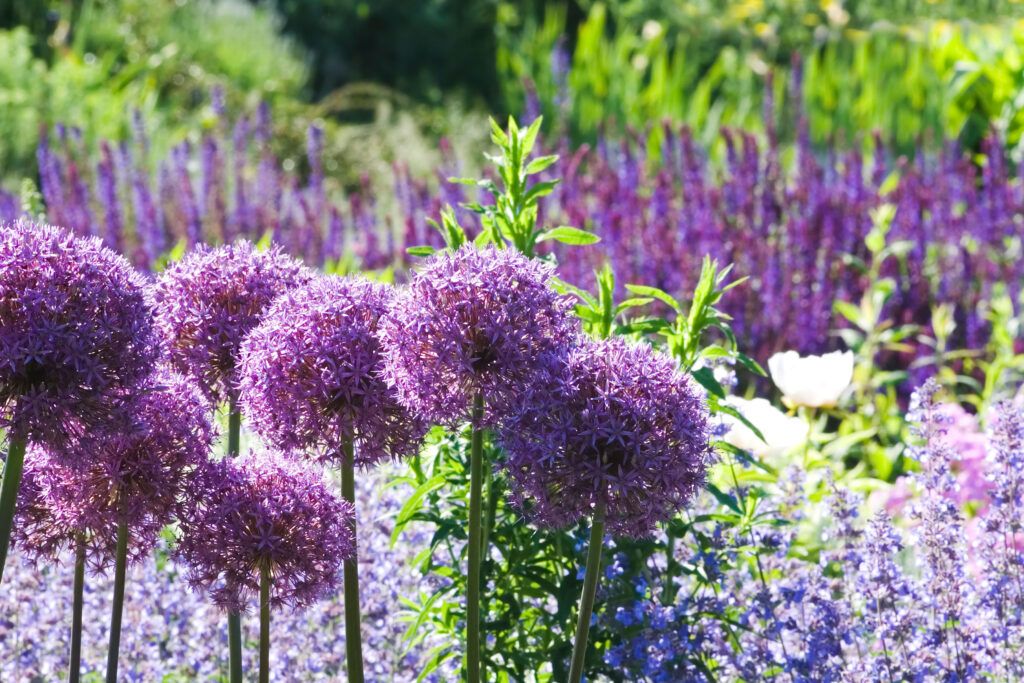
The key to successful interplanting is matching bulbs and perennials that bloom in sequence and have complementary foliage heights and textures. Cornell University’s Flower Bulb Research Program has tested numerous combinations to identify the best pairings. We’ll explore some effective combinations for popular bulb varieties below.
Tulips
Tulips pair beautifully with these perennials:
- Catmint (Nepeta x faassenii)
- Crocosmia ‘Lucifer’ (Crocosmia ‘Lucifer’)
- Bearded iris (Iris germanica)
- Meadow cranesbill (Geranium pratense ‘Splish Splash’)
- Oriental lily ‘Stargazer’ (Lilium ‘Stargazer’)
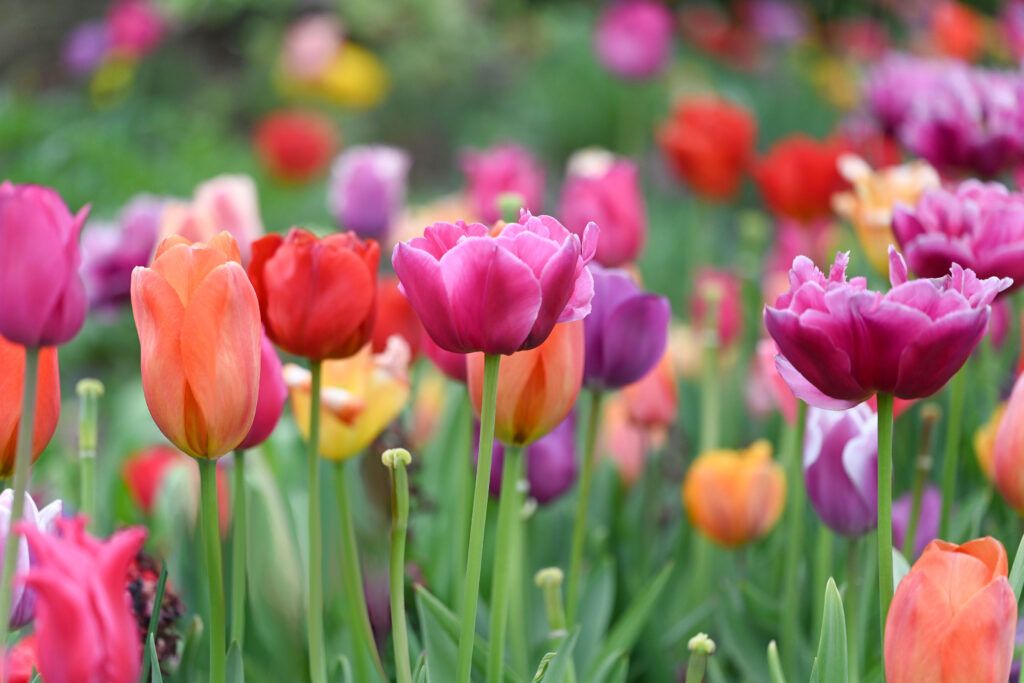
These combinations provide contrasting textures and extended bloom periods, ensuring your garden remains vibrant long after the tulips have faded. The mixture of colors and plant heights adds depth and variety to your garden.
Allium
Alliums, with their striking globe-shaped flowers, complement these perennials:
- Bigleaf aster (Aster macrophyllus)
- Lady’s mantle (Alchemilla mollis)
- Sage (Salvia nemorosa ‘Caradonna’)
- Sedum ‘Autumn Joy’ (Hylotelephium ‘Herbstsfreude’)
- Star gentian (Gentiana cruciata)
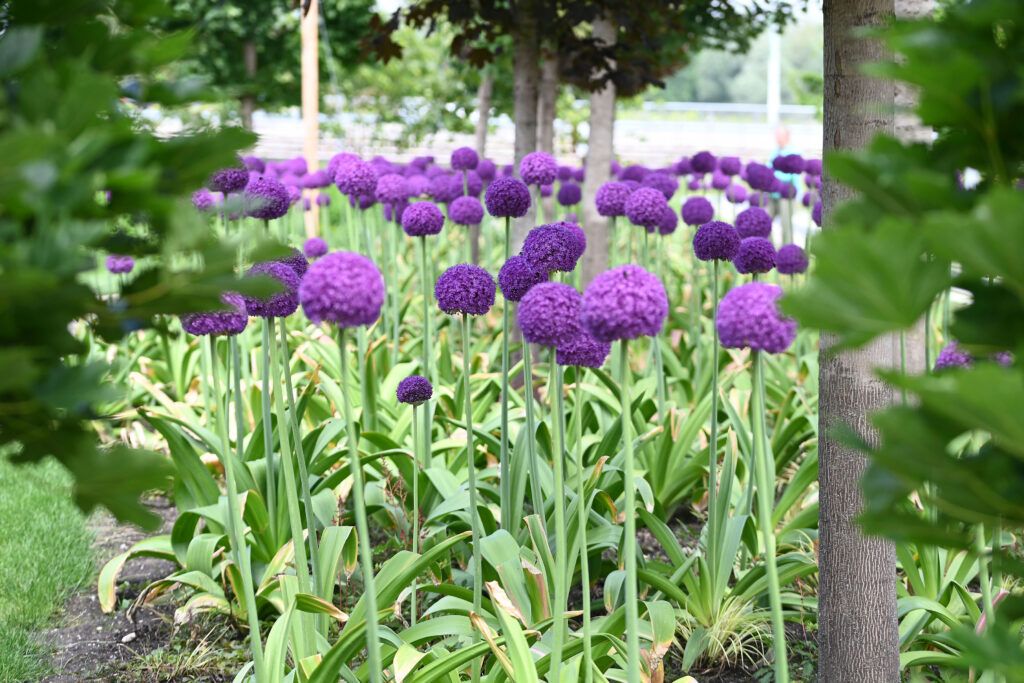
These pairings create a harmonious blend of shapes and colors, with the alliums providing vertical interest among lower-growing perennials. Together, these plants create a captivating display that evolves as the seasons progress.
Hyacinth
Fragrant hyacinths work well with these perennial companions:
- Bleeding heart (Dicentra spectabilis)
- Coral bells (Heuchera spp. )
- Maltese cross (Lychnis chalcadonica ‘Carnea’)
- Chinese rhubarb (Rheum palmatum ‘Atrosanguineum’)
- Sedge (Carex morrow ‘Ice Dance’)
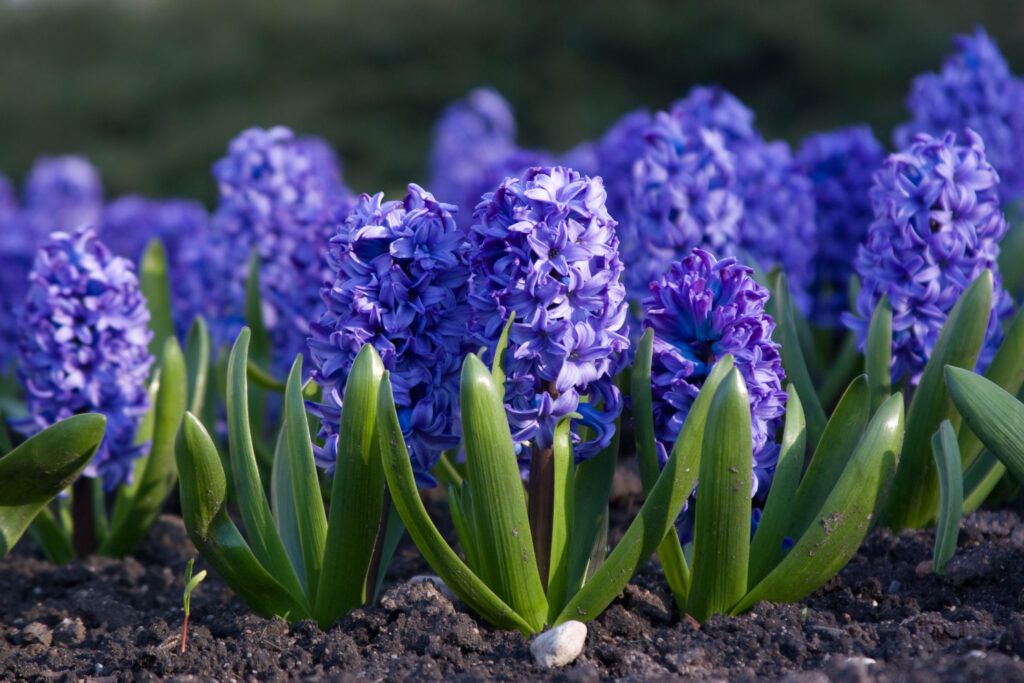
These combinations offer a mix of textures and colors that complement the bold, fragrant spikes of hyacinths. The vibrant hues and distinct plant forms enhance the garden’s overall aesthetic.
Crocus
Early-blooming crocus pairs nicely with these perennials:
- Chinese ground orchid (Bletilla striata)
- Creeping phlox (Phlox subulata)
- Geranium ‘Biokovo’ (Geranium cantabrigiense ‘Biokovo’)
- Hellebore (Helleborus orientalis)
- Hosta ‘Patriot’ (Hosta ‘Patriot’)
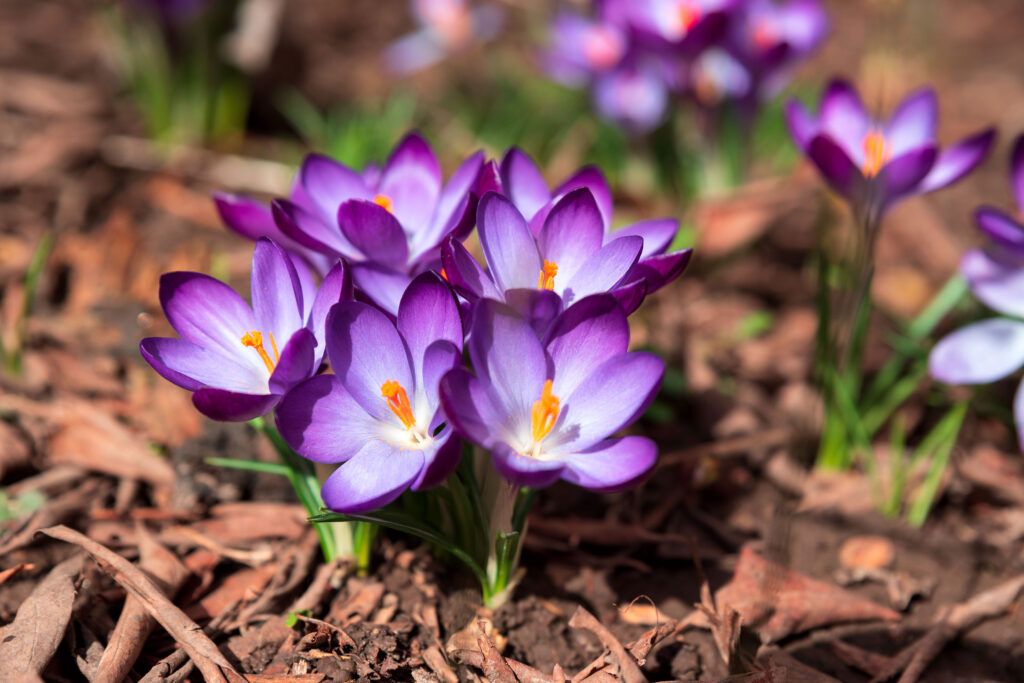
These combinations keep your garden visually engaging from late winter through spring. Crocus provides an early burst of color, followed by perennials that extend the display, creating a captivating, continuous show.
Daffodil
Cheerful daffodils complement these perennial partners:
- Catmint ‘Six Hills Giant’ (Nepeta ‘Six Hills Giant’)
- Columbine (Aquilegia spp. )
- Fern-leaf yarrow ‘Gold Plate’ (Achillea filipendulina ‘Gold Plate’)
- Peony (Paeonia lactiflora)
- Phlox ‘Bill Baker’ (Phlox paniculata ‘Bill Baker’)
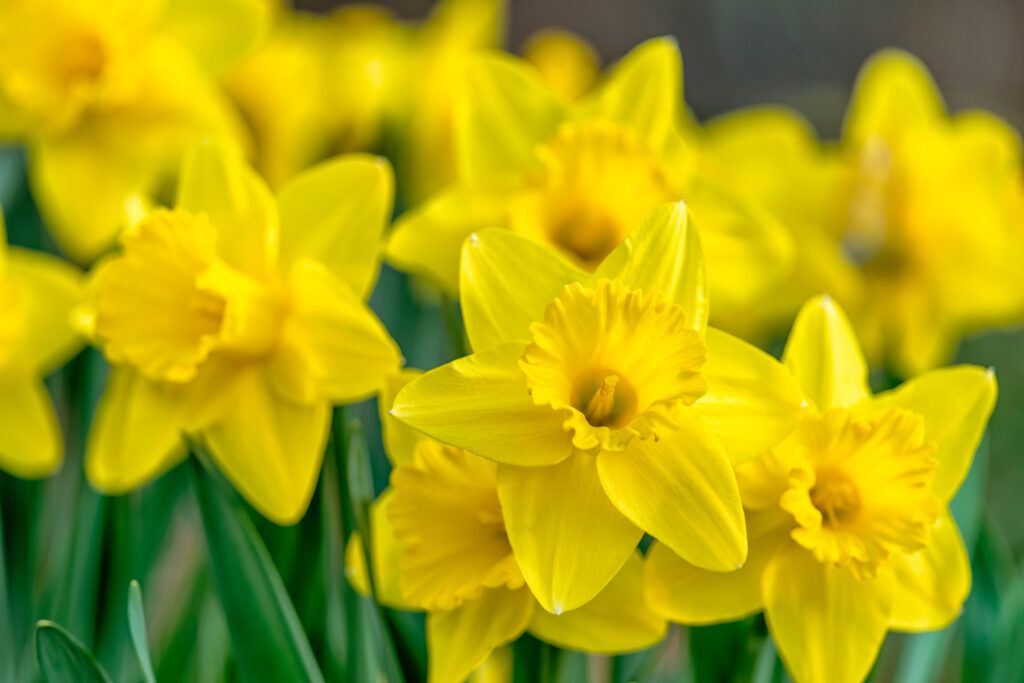
These pairings create a seamless transition from spring to summer blooms, with the daffodils providing early color and the perennials taking over as the season progresses. The blend of these flowers offers a lush, season-long visual experience.
Winter Care Tips for Unplanted Bulbs
Despite our best intentions, we sometimes find ourselves with unplanted bulbs as winter approaches. If you’ve missed the ideal planting window, don’t despair—there are still ways to salvage your bulbs and potentially enjoy their blooms.
If your garden soil is frozen or waterlogged from winter rains, try one of these options:
- Wait for a thaw or dry spell and plant the bulbs slightly deeper than usual to protect emerging roots from cold.
- Plant bulbs in pots and store them in a cool, dark place, watering sparingly throughout winter. In spring, move the pots outdoors.
- As a last resort, keep the bagged bulbs in a cool, dry place and plant them as soon as the ground thaws in early spring. While not ideal, you may still get some blooms.
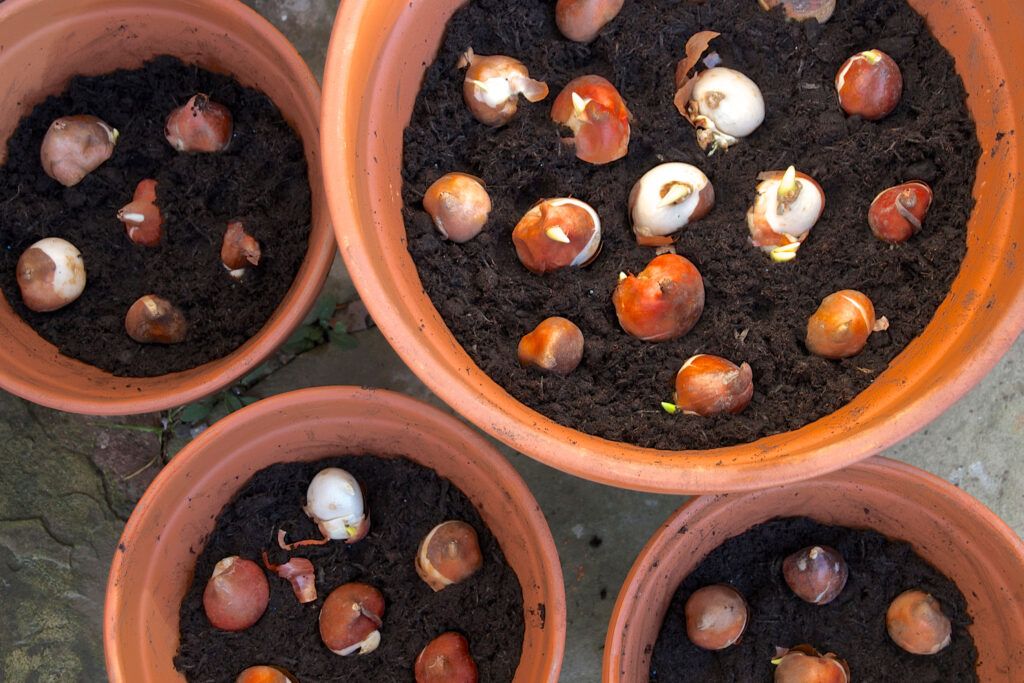
Remember, bulbs left out of soil for too long will dehydrate and die, so act quickly to give them the best chance of survival.
How To Encourage Bulb Multiplication
To promote bulb multiplication and enhance your garden displays, start by planting bulbs at the recommended depth for each variety to ensure optimal growth conditions and robust root development.
Allow the foliage to die back naturally after blooming, which enables the bulbs to store energy for the next growing season. After flowering, apply a balanced, slow-release fertilizer to supply the necessary nutrients for strong growth. Additionally, mulching around bulbs can help retain soil moisture and regulate temperature, further supporting healthy bulb development.
Over time, bulbs can become overcrowded, reducing flowering. To prevent this, divide bulbs every few years to minimize competition and stimulate new growth.
